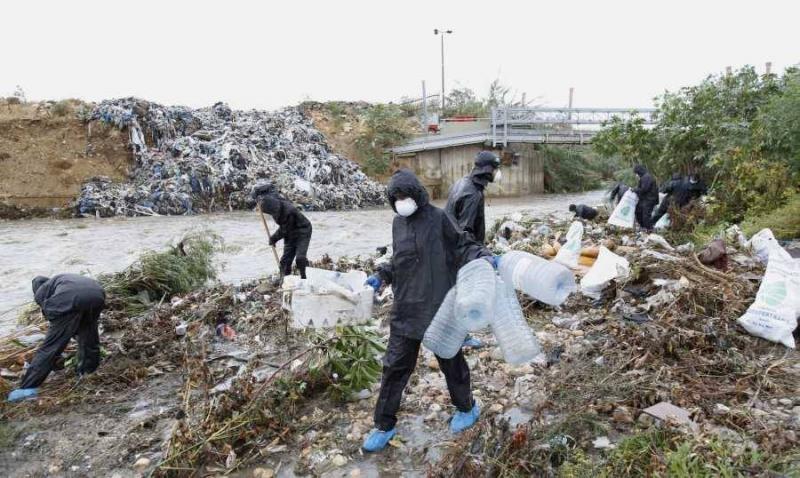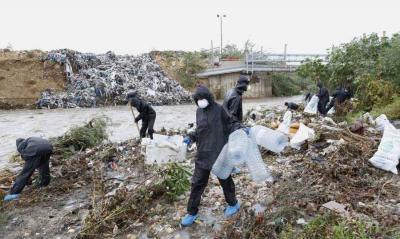The cholera outbreak in Lebanon has exposed several gaps in the infrastructure that have contributed to the spread of the disease, with experts attributing the worsening situation to the economic crisis the country has been experiencing since 2019. The latest figures from the Lebanese Ministry of Health indicate that there have been 718 confirmed or suspected cases of cholera, with at least 6 deaths recorded in Bnin, northern Lebanon.
What about the infrastructure in Lebanon? A source from the Council for Development and Reconstruction (a Lebanese governmental organization) stated in an interview with "Sky News Arabia" that the infrastructure in Lebanon is not completely lacking, as some may believe. They added, "It is true that the crisis has negatively affected the pace of work, but there are still projects being executed in Beirut, southern regions, Sidon, and the north," attributing the cholera outbreak to the following conditions:
- A total power outage across the country from the far south to the far north for over a year.
- This outage has led to the cessation of water pumping and the operation of treatment plants, resulting in the discontinuation of drinking water purification, which is now supplied to homes through contaminated tankers.
What does the Ministry of Energy and Water say? Engineer Suzi Hwaik, advisor to the Minister of Energy on water issues, did not deny that the electricity outage is the primary cause of the current situation. Hwaik attributed it to several reasons, including:
- The ministry's inability to supply citizens with clean treated water due to the lack of electricity.
- Many pumping stations operate on electricity, and the cost is exorbitant for alternative generators, which has contributed to their near-total cessation.
- Citizens resorting to unsafe water sources, such as private wells and contaminated tankers.
Hwaik continues, "In addition to the above, Lebanon has a fertile ground for receiving the epidemic due to its unpreparedness and reliance on unsafe sources. The cholera outbreak may be followed by other epidemics that are no less dangerous as long as the bacteria are abundantly present in the water."
Emergency solutions: Hwaik reveals to "Sky News Arabia" a "rapid plan to find emergency solutions." She clarifies: "We, as the Ministry of Energy, met with the Prime Minister and relevant authorities on Monday evening and made a quick decision to secure electricity starting from the end of this week for 3 hours daily on a rotating basis, coinciding with the arrival of the first fuel shipment from Iraq."
Endemic epidemics: In a related context, Dr. Mounzer Hamza, head of the Microbiology Laboratory of Health and Environment at the Lebanese University, told "Sky News Arabia": "Cholera is a bacterium associated with water, and typhoid fever has been endemic in Lebanon prior to cholera. A country where 'typhoid fever' is endemic indicates that its basic infrastructure is not sound." Hamza points out that "sewage water in most areas of Lebanon goes directly to pollute the coast, and many areas drain their wastewater into rivers like the Abu Ali River in the center of Tripoli in northern Lebanon."
Hamza notes studies conducted in his laboratory that relied on samples from the Akkar plain's crops and fresh well water used for irrigation, which indicated that "100 percent of the samples were alarmingly contaminated with bacteria, and the crops carried the germs." He explains that "75 percent of cholera patients in Lebanon show no symptoms, which is where the danger lies."
Study and statistics: Environmental activist and expert George Aql told "Sky News Arabia" that the cholera conditions differ from previous outbreaks for the following reasons:
- The pollution of most water sources used for irrigation, drinking, and household use, while supply remains below the required level, has accelerated the outbreak across most Lebanese governorates.
- Lebanon is currently facing a crisis in the water infrastructure sector due to electricity outages.
- Aql refers to a statistical study conducted in 2018 from "Environment and Future Prospects in Lebanon 2020," indicating that 67 percent of residents in northern Lebanon receive drinking water from unsafe sources.
- According to the study, "water loss from drinking water networks reaches up to 55 percent in some Lebanese areas."
Aql states: "The sewage crisis has worsened with the increasing severity of electricity outages affecting most wastewater treatment plants, making the pumping and treatment of sewage water difficult." He elaborates: "Of the 78 wastewater treatment plants distributed across most Lebanese governorates with a capacity of 664 cubic meters per day, only 11 plants work on the primary treatment of sewage water, while the entire volume is discharged into adjacent open water bodies amidst rising costs for purchasing spare parts and devices operating in the water sector."




